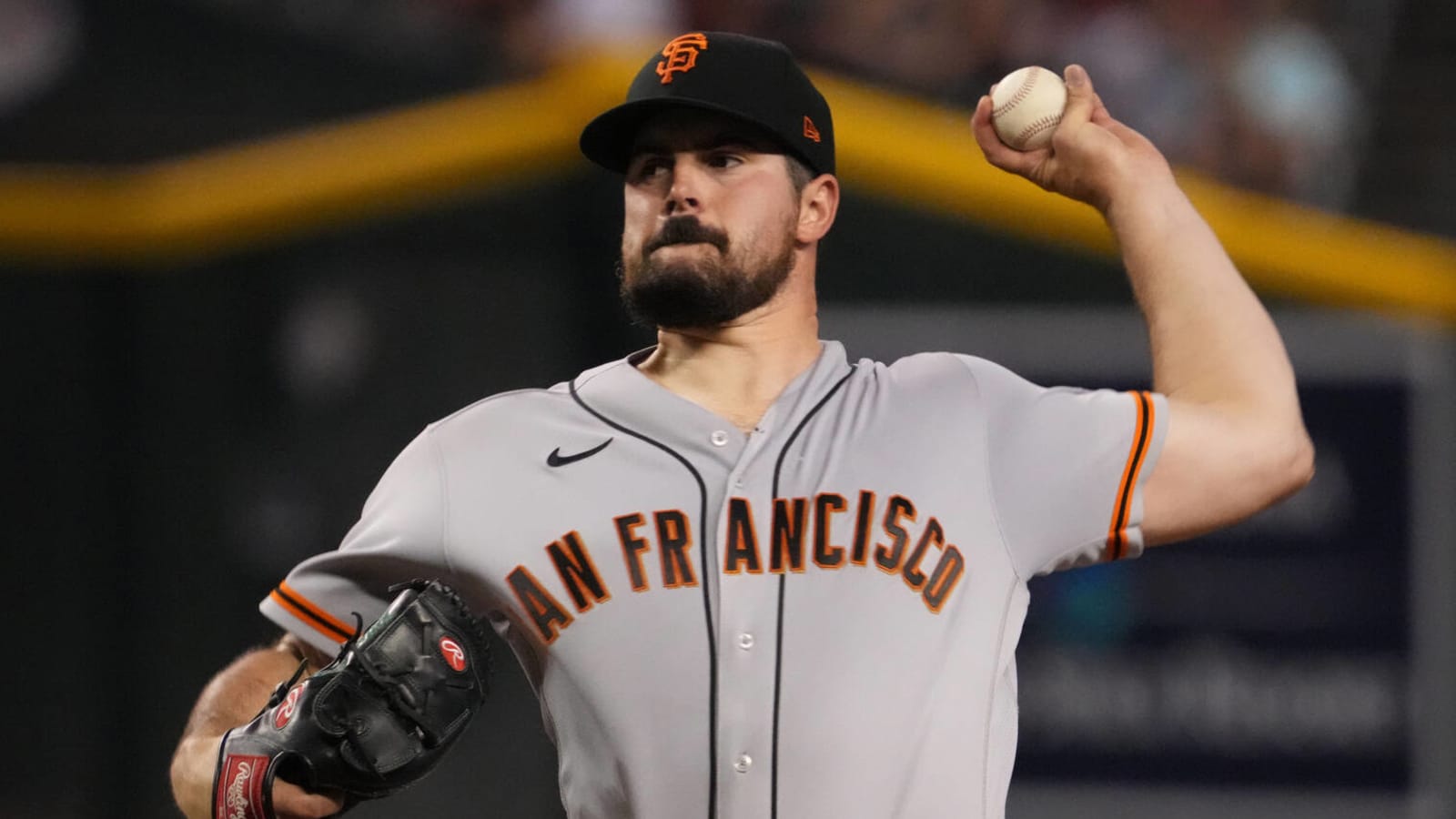
One year after shocking baseball by signing both Marcus Semien and Corey Seager for a combined half-billion dollars, the Rangers appear to at least be considering a similar double dip into the deep end of the free-agent pool. Ken Rosenthal of The Athletic reports that the Rangers met with Carlos Rodon just one day after signing Jacob deGrom to a hefty five-year, $185M contract.
With deGrom in Texas and Justin Verlander having agreed to terms with the Mets, Rodon is the lone free-agent ace left on the board. He’s reportedly been seeking a six-year deal worth more than $30M annually — a weighty sum for a pitcher with a lengthy injury history that includes both shoulder surgery and Tommy John surgery.
That said, Rodon has left little doubt in recent years that he’s among the sport’s most talented pitchers. After signing a $3M pillow contract with the White Sox in the 2020-21 offseason, he, at last, made good on the expectations associated with his name dating back to his No. 3 overall selection in the draft. Through the first four months of the 2021 season, Rodon was arguably the best pitcher in baseball and looked like the clear front-runner for the American League Cy Young Award.
Shoulder fatigue limited Rodon to just 28 innings in the season’s final two months, however, and when he did pitch down the stretch in 2021, it was often with reduced velocity. The White Sox were wary enough that they declined to put forth a qualifying offer, and Rodon inked a two-year, $44M deal with the Giants that allowed him to opt back into the open market if he reached 110 innings on the season.
Not only did Rodon reach 110 innings, but he did so while again putting himself onto the periphery of the Cy Young race. The lefty tossed a career-high 178 innings with a 2.88 ERA, held his velocity late into the season, and averaged better than 5 2/3 innings per start as a member of the Giants. He led the National League in strikeouts and, since Opening Day 2021, leads all Major League pitchers (min. 200 innings) with a 33.9% strikeout rate. Rodon has done all that while pitching to a combined ERA of 2.67 with similarly excellent marks in FIP (2.42) and SIERA (2.88).
Onlookers may wonder just how the Rangers could even consider continuing to spend so aggressively in such a short period — particularly when so many teams have been averse to paying the luxury tax in recent seasons. The increased luxury tax thresholds in the 2022-26 collective bargaining agreement surely play a role, as the first-tier threshold has climbed from $210M in 2021 to $233M this coming season.
The luxury tax, however, isn’t a major issue for the Rangers — at least not yet. Roster Resource projects that they currently have about $192.4M of luxury obligations, meaning even signing Rodon at a $30M AAV would still leave them with more than $10M of breathing room from the first tier of penalization. It’s also worth noting that the penalty for first-time offenders is rather tepid — relatively speaking. The Rangers would owe a 20% tax on the first $20M by which they exceed the $233M threshold and a 30% tax on the next $20M. Even shattering the luxury barrier by a means of $40M would give the Rangers $10M in penalties — about the price of signing a back-of-the-rotation starter in the current market.
Of course, signing Rodon would squarely set the Rangers up for a potential long-term status as a luxury payor. The combination of deGrom, Seager, Semien, and Jon Gray amounts to $107.5M on its own, and tacking on $30M+ for Rodon would get Texas nearly 60% of the way to luxury territory even as far out as the 2024 campaign — and that’s not even including arbitration-eligible players and pre-arb players to round out the roster.
Texas, however, is enjoying the fruits of a newly constructed stadium that drew more than two million fans in 2022 and can surely anticipate that number will climb in 2023, with deGrom (at the very least) now on board. Ownership from all 30 clubs is also perhaps a bit more willing to spend after the league sold off its remaining 15% stake in BAMTech to Disney for $900M, the spoils of which were divided among teams. Meanwhile, lucrative streaming deals with Apple and NBC/Peacock have only further bolstered revenues for the league’s 30 teams. Heading into the 2022 season, national television and streaming rights afforded all 30 teams approximately $65M in revenue before factoring in local television deals, attendance, concessions, and other sources of revenue.
More must-reads:
- Carlos Rodon seeking six-year deal
- Orioles among numerous teams interested in Carlos Rodon
- The '2010 & 2011 Texas Rangers' quiz
Breaking News
Customize Your Newsletter
 +
+
Get the latest news and rumors, customized to your favorite sports and teams. Emailed daily. Always free!

